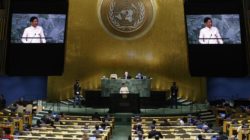The destruction wrought by Typhoon Rai in the Philippines was “badly overestimated” in initial assessments, according to the United Nations, bringing the total number of people “seriously affected” to 9 million.
A week after the hurricane destroyed the archipelago’s southern and central areas, killing 406 people and displacing hundreds of thousands, the UN began a drive to gather US$107.2 million in help for victims.
However, the UN Resident Coordinator in the Philippines, Gustavo Gonzalez, announced on Thursday (Jan 20) that the aim would be lowered after more than 66 field assessments revealed that the destruction was significantly worse than previously assumed.
“One month after Super Typhoon Rai made landfall, we realize we grossly misjudged the degree of devastation,” Gonzalez said in a virtual briefing.
More than 1.5 million homes were damaged or destroyed by the storm, nearly a third more than in 2013’s Super Typhoon Haiyan, according to Gonzalez, who added that more resources were “desperately needed.”
Only 40% of the funding have been received, according to Gonzalez, who called for international solidarity with the Philippines to prevent the hurricane from becoming a “forgotten disaster.”
The economies of typhoon-affected areas, which were already dealing with COVID-19, poverty, and starvation, had been “literally destroyed.”
He stated, “This is a really delicate place.”
Humanitarian organizations have been collaborating with the government to give food, drinking water, tents, and building materials.
However, due to the magnitude of the tragedy, a lack of power and communications in some places, and exhausted government resources following the COVID-19 reaction, efforts to deliver help have been impeded.
A rise in illnesses caused by Omicron is also isolating aid personnel and making travel more difficult.
Gonzalez said the region’s constant rain added to the agony.
He explained, “We’re talking about a crisis within a crisis.”
Officials earlier stated that Rai, the fiercest typhoon to hit the Philippines last year, intensified faster than projected.
Scientists have long warned that as the world warms due to human-caused climate change, typhoons will strengthen more quickly.
Every year, the Philippines, which is one of the most vulnerable countries to its effects, is slammed by an average of 20 storms.
Typhoon Haiyan, which hit the Philippines in 2013, was the strongest typhoon to ever make landfall, killing or missing nearly 7,300 people.
Source: AFP








